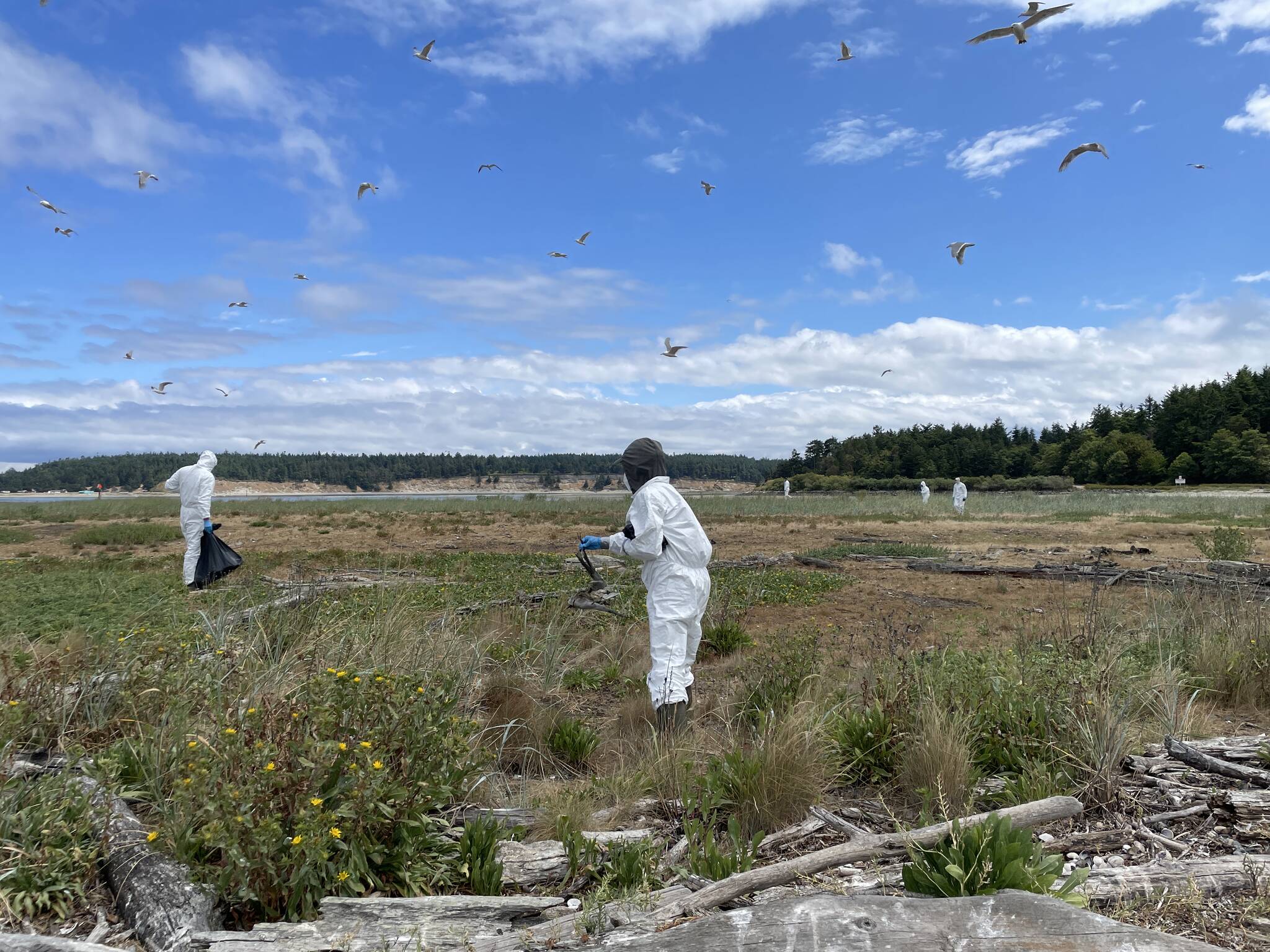Avian influenza is not unusual in North America, but its recent staying power is.
The current outbreak of avian influenza (H5N1), also known as bird flu, began in 2022 and is different from other outbreaks, said Katherine Haman, wildlife veterinarian for the Washington Department of Fish and Wildlife (WDFW).
Historically, she said, bird flu outbreaks were primarily concentrated in domestic poultry, which allowed agricultural departments to take action to end the outbreak.
Now, the virus is being maintained in wild bird populations.
“That’s primarily waterfowl, but also raptors and birds of prey, things that might scavenge and/or eat waterfowl and have the virus be transmitted that way,” she said. “What we’re seeing now is it is being maintained on the landscape in wild birds, and it’s continuing to spill from wild birds into domestics.”
Chris Anderson, WDFW’s King County district biologist, said there have not been large die-offs because of bird flu in the Snoqualmie Valley, but that could change at any time.
“I’m not a pathologist but … this looks like it might be the new normal,” he said. “All it takes is one flock that’s having an outbreak.”
Because officials cannot control the disease in the wild, it’s important to take biosecurity measures to protect domestic birds, Anderson said. As listed on the Washington State Department of Agriculture’s website, measures include building out chicken coops so that wild animals cannot interact with domestics, as well as making sure those entering the coop are wearing disinfected shoes.
“You could just walk around your yard and step in crow poop, if the crow had it, and walk in there and your birds could get sick,” Anderson said. “And it’s not just wild birds. A raccoon could come in and maybe have it, too.”
The bird flu has been making headlines more frequently in the past year as outbreaks have occurred in mammals and some humans. In Washington state, bird flu has been found in raccoons and bobcats.
In regards to pets, Haman said dogs have so far not been highly susceptible to this strain of bird flu, but cats are. It is most important, she said, to stop feeding pets a raw diet. Cooked food is safe because the virus is killed at a temperature of 165 degrees Fahrenheit or higher.
This applies to humans as well. Haman said there is not a great concern of hunters contracting the virus because poultry cooked to the correct temperature should not be harmful.
However, humans, while not highly susceptible, can get bird flu from interacting with infected animals. If a sick or dead bird is found, the finder can report it to WDFW at wdfw.wa.gov/get-involved/report-observations.
If WDFW is unable to dispose of the animal, Anderson said finders should wear disposable gloves to double-bag the carcass before throwing it in the regular trash. Surfaces touched by the carcass should be decontaminated with a solution of 10% bleach and cool water for 10 minutes, then rinsed with warm water.
WDFW cannot respond to every single report, Haman said, but it’s important to file a report anyway so the department can keep track of cases.
“If five or more of the same species are reported in the same relative geographic area over three or four days, that will spark like, hey, something’s going on here, we need to get out and see what’s going on and potentially respond to this,” she said. “Even if we don’t respond to every single report, it’s great information that the public is providing to the agency.”
While there have been about 70 reported U.S. cases of the virus in humans since 2022, Haman noted that people generally don’t need to be worried. So far, she said, the human cases detected in the United States have been associated with outbreaks on poultry farms or drinking raw milk.
“The risk is, at this point in time, very low,” she said. “There has not been a case where a person got infected from a wild bird that we know of. Simple precautions when dealing with sick and dead wildlife can go a very long way in protecting human health.”


